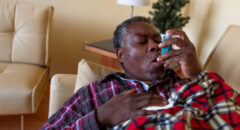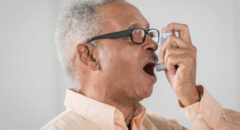
Living with COPD is no walk in the park, especially when it comes to dealing with environmental factors like humidity. Whether it's too muggy or bone-dry, both high and low humidity levels can really throw a wrench into the whole breathing situation, making things a bit tougher for you.
Getting to Know COPD
COPD, which includes chronic bronchitis and emphysema, is a condition that affects a lot of people. It messes with your airflow, causing symptoms like shortness of breath, chronic coughing, and wheezing.
But here's the thing: you can take charge of your COPD journey, and understanding how humidity plays a role is a great place to start.
The Impact of High Humidity
When humidity levels go through the roof, it can make your breathing feel like you're running a marathon without even moving.
The extra moisture in the air messes with your exhaling game, leaving you feeling breathless and not in a good way.
Plus, it makes your lungs work overtime, and we know they're already putting in some serious hours.
As the body attempts to regulate its temperature through sweating, COPD patients may find themselves breathing faster and more shallowly, putting additional strain on their already compromised lungs.
RELATED: Humidifiers vs. Vaporizers: Which Is Best For Your Family?
Tips for Tackling High Humidity
- Hydrate, Hydrate, Hydrate: Sip on that water! Staying hydrated is key. It helps keep the mucus in your airways manageable, making it easier for you to cough it up and clear your breathing passages.
- Chill Out with Air Conditioning: Lucky for us, air conditioning isn't just about staying cool. It also kicks humidity to the curb indoors. So, find comfort in air-conditioned spaces, especially when the outside world feels like a steam bath.
- Time Your Outdoor Adventures: If you're an outdoor enthusiast, consider planning your activities during the cooler parts of the day, like early mornings or late evenings when humidity levels take a breather.
The Impact of Low Humidity
On the flip side, low humidity has its own set of challenges.
Dry air can be a bit of a troublemaker, irritating your airways and causing more mucus production. Cue the coughing fits and that annoying tight feeling in your chest.
Tips for Tackling Low Humidity
- Bring in the Humidifiers: Humidifiers are like your lungs' best friend. They add moisture to the air, making it less dry and more COPD-friendly. Stick one in your bedroom, and let it work its magic while you catch those Zs.
- Bundle Up and Humidify: Cold air can be dry, and that's not your friend. Bundle up, throw on scarves, or use masks to add some moisture to the air you're breathing in during those colder months.
- Indoor Hangs on Extreme Days: If humidity levels are playing hard to get, or the air quality is taking a nosedive, maybe consider cozying up indoors. It's a good move to avoid triggering or worsening those COPD symptoms.
Your COPD journey is uniquely yours, and environmental factors like humidity are part of the mix. The good news? You've got some tricks up your sleeve. Whether it's sipping water, basking in air-conditioned glory, or bringing in the humidifiers, you've got options. Don't forget to consult with your healthcare squad for personalized advice because, at the end of the day, you're the boss of your COPD journey. Keep breathing easy!









